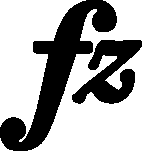



|
b. 56
|
composition: Op. 28 No. 17, Prelude in A♭ major
..
At the beginning of the bar, in FCI one can see a quaver dyad in the bottom R.H. voice. The top note is d2, while the pitch of the bottom note is poorly legible on the available photograph – it can be g1 or g1 transformed into a category imprint: Graphic ambiguousness |
|||||
|
b. 59-61
|
composition: Op. 28 No. 17, Prelude in A♭ major
..
FCI has e category imprint: Differences between sources; Corrections & alterations; Source & stylistic information issues: Bass register changes |
|||||
|
b. 61-64
|
composition: Op. 28 No. 17, Prelude in A♭ major
..
In the manuscripts the dynamic indications are placed under the L.H. part, which must have resulted from lack of space between the staves. Due to the abridged notation of these bars in the manuscripts, it is impossible to accurately determine the range of those indications – it differs depending on whether we examine them in relation to the bar lines or the written-down notes. In the final version, the more abundant dynamic indications of FCI were reduced to the indispensable minimum. category imprint: Differences between sources; Corrections & alterations |
|||||
|
b. 64
|
composition: Op. 28 No. 17, Prelude in A♭ major
..
In FCI the last e category imprint: Differences between sources; Corrections & alterations |
|||||
|
b. 65
|
composition: Op. 28 No. 17, Prelude in A♭ major
..
The missing "I remember once when I was playing the 17th Prelude of Chopin, Madame Dubois said that Chopin himself used to play that bass note [A Fontana, who knew the Prelude from a still earlier version, apparently memorized that effect, since he added * I. J. Paderewski, Mary Lawton, The Paderewski Memoirs, London 1939, p. 154. category imprint: Differences between sources issues: Errors of A , Fontana's revisions |

 1. To our interpretation of
1. To our interpretation of 
 , cresc. - - dim.,
, cresc. - - dim.,  in
in 
 in
in